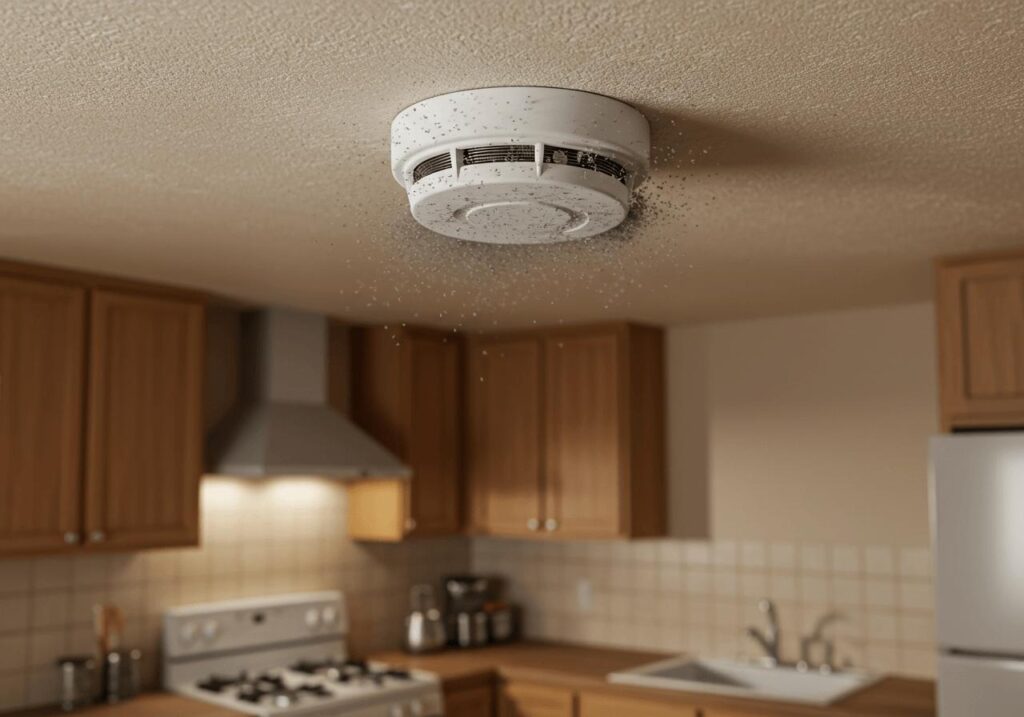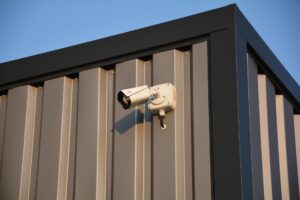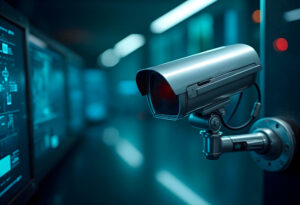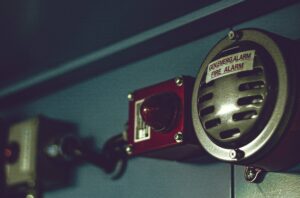Why Does My Smoke Alarm Keep Going Off?
False alarms from smoke detectors (also called smoke alarms) are more than just annoying because they’re potentially dangerous when people disable their devices. Nearly three out of five home fire deaths occur in properties with non-functional or missing smoke detectors, making it important to understand why these life-saving alarms and detectors sometimes trigger unnecessarily. Getting the right fire protection means minimising false alarms.
Smoke detector false alarms have specific causes that can be addressed without disabling your detector. Understanding these triggers helps maintain protection for your home while reducing disruptions from your fire alarm system.
Key Takeaways:
- Proper placement of smoke detectors (at least 10 feet from cooking) reduces false alarms.
- Regular cleaning prevents dust and insects from triggering sensitive alarm sensors.
- Steam and humidity can activate smoke alarms unnecessarily.
- Different detector types (photoelectric smoke alarm vs. ionisation) respond differently. Heat alarms are an alternative in some areas.
- Never disable a detector due to false alarms; working smoke alarms dramatically reduce fire death risk.
The Life-Saving Technology That Sometimes Cries Wolf
Smoke detectors save lives, but their sensitivity can lead to frustrating false alarms. Understanding the two main detector types helps: photoelectric smoke alarms (or optical smoke detectors) use a light beam scattered by smoke particles, while ionisation detectors use a current disrupted by smoke particles. Optical smoke models generally detect smoldering fires better, while ionisation detectors respond faster to flaming fires. Some smoke alarms and heat detectors are combined (smoke and heat alarm).
False alarms have consequences. Surveys found many smoke alarms disabled due to nuisance activations, creating dangerous gaps. Addressing the root causes of false alarms is essential. Don’t disconnect these critical fire safety devices.

Cooking and Food Preparation: The Number One Culprit
Kitchen activities are the leading cause of false alarms from home smoke alarms. High-temp cooking creates smoke particles. Toasters and air fryers often produce enough smoke/steam to trigger the alarm.
To reduce kitchen false alarms:
- Use exhaust fans.
- Keep detector placement >10 feet from cooking appliances.
- Consider a heat alarm (or heat detector) instead of a smoke alarm in the kitchen itself. Heat detectors respond to temperature, not smoke.
- Open windows.
- Clean appliances.
Proper fire alarm installation attentive to kitchen placement significantly reduces false alarms.
Steam and Humidity: When Water Vapor Mimics Smoke
Steam can mimic smoke for both optical smoke detectors and ionisation types. Bathroom steam often triggers nearby smoke alarms. Steam from dishwashers or kettles can also affect smoke detection sensitivity.
High humidity, especially in summer, increases false alarms. Position detectors at least 3 feet from bathrooms and other high-humidity sources to minimise these alerts.
Improper Placement: Location Matters
Detector location impacts false alarm frequency. Follow guidelines for placement:
- At least 10 feet from cooking appliances.
- Minimum 3 feet from bathrooms/high-humidity areas.
- At least 3 feet from HVAC vents.
- Avoid dead air spaces (corners).
- Near the peak for vaulted ceilings.
Ceiling height matters. Wall-mounted detectors should be 4-12 inches below standard ceilings. Ceiling mounting is better for higher ceilings to ensure smoke enters the chamber effectively. Correct placement ensures early smoke detection.
Dust and Debris: The Silent Sensitivity Trigger
Dust is problematic for photoelectric smoke alarms as it scatters light like visible smoke. Dust released when heating systems activate or during renovations increases airborne particles, triggering false alarms. Dust and insects are common culprits.
Regular maintenance prevents dust-related false alarms. Clean smoke detectors every six months (or more often if needed). Gently vacuum the exterior and wipe the casing. Consider professional maintenance and repairs if issues persist.
Insects and Small Intruders
Insects entering detector openings can disrupt smoke sensing mechanisms. Spider webs are particularly problematic for optical smoke detector models.
Prevent insect intrusions:
- Inspect monthly.
- Use compressed air gently.
- Consider detectors with finer mesh screens.
- Keep the area clean.
Battery Issues and Power Fluctuations
Low battery chirps are often mistaken for false alarms. When the battery is low, detectors emit intermittent warning signals (a distinct chirp). This is different from a full alarm alert.
Power surges can trigger hard wired (mains-powered) detector systems. Smoke detectors have a limited battery life (around 10 years for the unit itself, even with mains power and battery backup – often a lithium battery). After this, they send end-of-life signals often misinterpreted as malfunctions. Replacing batteries annually (for battery operated / battery-powered smoke alarms) and entire detectors (like Kidde or First Alert models) every 10 years reduces these issues.
Prevention and Solution Strategies
Never disable detectors. The risk of dying in a home fire is 55% lower with working smoke alarms.
Reduce false alarms while maintaining protection:
- Match detector types to locations (photoelectric/optical smoke near potential smoldering sources; heat alarms in kitchens/garages). Consider the range of smoke alarms available.
- Clean consistently.
- Upgrade to smart smoke detectors that differentiate smoke types. Many wireless smoke alarms offer smart features. Consider interlinked smoke alarms (wireless interlinked smoke alarms are popular) so all sound when one detects smoke.
- Install a heat detector instead of a smoke detector in locations where false alarms are frequent (e.g., kitchens).
- Use combination photoelectric/ionisation detectors.
- Consider carbon monoxide detectors too (often available as smoke and carbon monoxide combination units). A carbon monoxide alarm detects the poisonous gas CO, which smoke alarms do not.
For persistent issues, consult professionals via contact us. They can recommend optimal placement and types from the range of smoke detection products for your home security system. When you buy smoke alarms, ensure they meet relevant standards. In larger buildings or commercial and industrial settings, smoke detectors issue a signal to a fire alarm control panel as part of a central fire alarm system, which then activates an alarm (often including sounders and potentially a visual alarm like a strobe). Domestic smoke alarms typically issue an audible alarm directly. Remember, the goal is reliable fire detection in the event of a fire.
Sources
NFPA – Smoke Alarms in US Home Fires
Apollo Fire – What are the Leading Causes of False Alarms?
Chatham County NC – Reducing Nuisance Alarms
NIST – False Alarm Study of Smoke Detectors
Vivint – Smoke Detector Sensitivity












